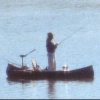
Goose52 replied to geo g's topic in Bass Boats, Canoes, Kayaks and more

Goose52 replied to Andy Taylor's topic in Bass Boats, Canoes, Kayaks and more

Goose52 replied to Andy Taylor's topic in Bass Boats, Canoes, Kayaks and more


Goose52 replied to FrankN209's topic in Fishing Rods, Reels, Line, and Knots

Goose52 replied to oldschoolbasser's topic in Fishing Rods, Reels, Line, and Knots

Goose52 replied to bluenitrouscoupe's topic in Bass Boats, Canoes, Kayaks and more

Goose52 replied to baluga's topic in Fishing Rods, Reels, Line, and Knots

Goose52 replied to oldschoolbasser's topic in Fishing Rods, Reels, Line, and Knots
We have placed cookies on your device to help make this website better. You can adjust your cookie settings, otherwise we'll assume you're okay to continue.

